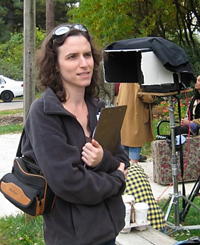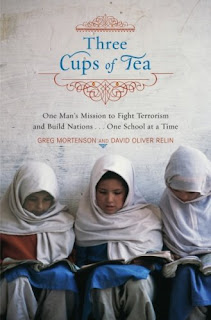For Indie Film to thrive, a producer must consider all revenue streams from the beginning. Of course not every project, is applicable to every opportunity, but nonetheless, you want a box to check for each. The Educational Market is one platform that goes unchecked for many filmmakers. Let’s change that!
Filmmaker, and expert on this field, Rachel Gordon graciously offered to share what she knows of this field with you.
I began working with non-theatrical distribution at the National Film Board of Canada over 10 years ago. As a filmmaker, the experience of finding new markets for films that were under an hour, and even animated, was exhilarating as I’d worked on so many films that would never see the inside of a theater.
Educational distribution is broadly defined as any usage of media that is not consumed in a traditional theater, or home video setting. Examples include, but are not limited to: classrooms – both K-12 and colleges, museums, non-profit/advocacy groups, etc. It is not an exact science, and it often takes longer to start seeing returns than people have patience for. If you stick with it long enough, though, you’ll connect directly with an invested audience that will keep up with your projects.
So discussed here is how to make your film an educational tool, no matter what its length or genre, and hopefully pay a few bills in the process. This should not be relied on as your only form of income. Academic environments take longer because people plan courses ahead of time so expect this outreach process to take a minimum of 6 months, up to a year, to hit solidly.
Technical preparation:
1. During DVD creation, provide chapters of your film that are 5-7 minutes long. Don’t randomly pick the timing, use whole thought segments.
2. Disability accessibility features such as closed (or open) captioning and audio description may seem like “extras” but are becoming more necessary as state agencies and educational facilities adopt ADA (American with Disabilities Act) specifications into law.
3. Study guides are highly useful, as your way of helping any audience understand what they are supposed to get out of watching your film. Educators appreciate these as they often lack preparation time and energy.
4. Be prepared to process orders in any way that is convenient for your customers – including check, purchase order, credit card. If you make it hard to buy or use your film, people will lose patience and not ask for help.
5. Be flexible about how the content gets delivered. Current options include DVD, streaming, digital download, closed-circuit/institutional television, and the right for media to be accessed from a central server.
6. Be creative with photos and artwork. DVD covers should include pictures, synopsis, and quotes. If you hand someone a clear case, it’s going to look bland, uninteresting, and less reliable as an educational source.
At the beginning, you want to get some copies out to organizations that have like-minded ideals. Reach out to them and be prepared to send them review copies with such questions as:
How would you use the film?
Who do you think should see this?
What social action goals does this film serve?
Every time a copy of your film leaves your hands, see who it went to and note what type of organization they are coming from. Write them thanking them for support and seek their feedback to build on.
It’s also important to send review copies to the top educational publications – almost every media librarian in the country subscribes to them – university and public libraries alike – and they also peer-review the materials. Give about 3-6 months time for them to get to it. These publications include (but again, aren’t limited to): Video Librarian, Educational Media Reviews Online, Library Journal.
There are academic studies dedicated to any subject you can think of, and they all use media as a tool with which to engage their students because they realize that students are consuming online video content. The academic world extends beyond the classroom to include conferences, publications, and professional development.
It is, and seems like, a long process, but what you get from all of this work are people who do come back and want to continue to use your media to help with their programming. What is also amazing is how positive and supportive educational environments are. Librarians who use and promote your work respect copyright issues, talk on a variety of listservs about content that they find helpful, and are generally quick to respond and answer questions about what is going on in their worlds.

Rachel Gordon is a New York based independent filmmaker and consultant who started Energized Films to help other filmmakers, and distributors, expand the audience of their media into receptive homes in academic, non-profit, and other specialty markets. She’s currently developing a comedic feature about feminine fear of commitment, making a documentary about homeopathy, and speaking to film schools about the importance of teaching distribution to students.





